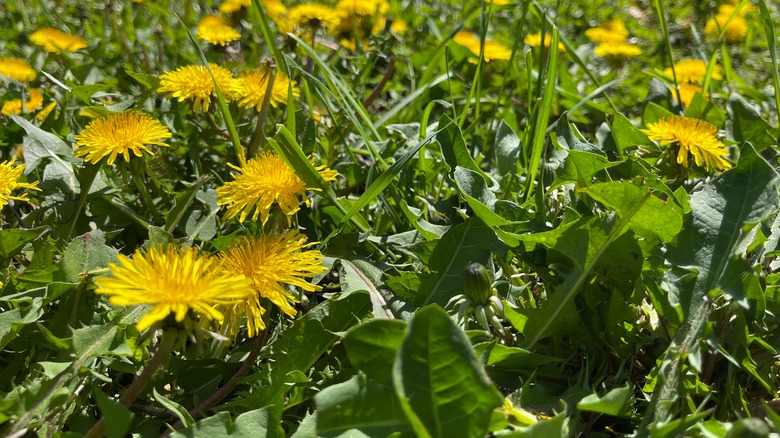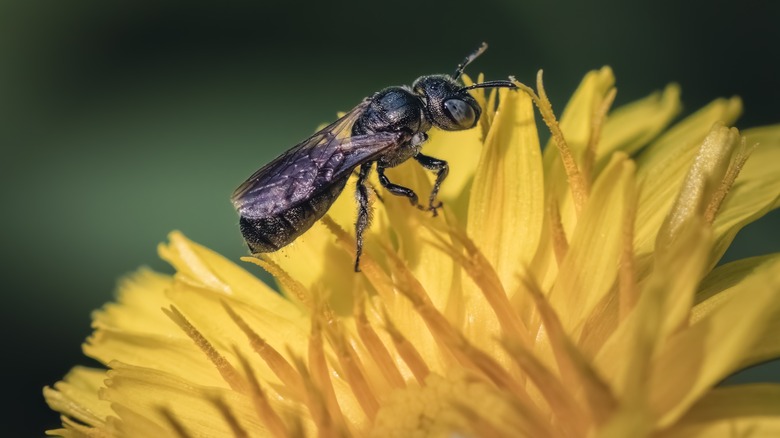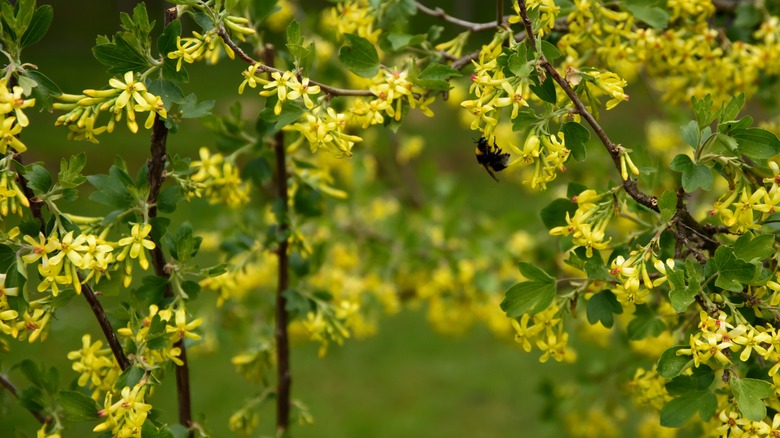Don't Kill The Dandelions In Your Yard Before You Read This
The dandelion has become the poster child for No Mow May — a movement encouraging gardeners to let the grass grow until June so that pollinators such as bees and other beneficial insects can forage from the flowering weeds nestled in our grassy lawns. However, the pervasive dandelion (Taraxacum officinale) is usually considered non-native in the US and Canada, and whether this edible, flowering perennial is good for bees or not truly depends on the context.
A well-manicured turf lawn can be the equivalent of a food desert for bees, butterflies, and other pollinators, so some well-meaning gardeners allow dandelions to flourish in their yards with the understanding that these yellow flowers provide an important early spring food source. Whatever the intentions behind a yard full of dandelions, there are disadvantages as well as advantages to growing these weeds in the hopes that their bright yellow flowers will feed pollinators.
The advantages of growing dandelions for bees
When dandelions grow in a location with scarcely any vegetation — such as a grassy median in a city — these weedy flowers may be providing a little food for insects with few other options. And in suburban areas with landscaping but little diversity, allowing dandelion and other flowering weeds such as clover and violet to remain part of a grassy lawn is an offering to the insects trying to live their lives there, even if it's a meager one.
A less obvious but no less important benefit is that gardeners who decide to leave these weeds may avoid using the herbicides commonly used to kill them, and which are also harmful to pollinators such as bees and butterflies. And if the problem with having these flowers as part of the lawn is merely aesthetic, gardeners might want to look to other means of sprucing it up. Dandelions may not be the main reason a yard looks shoddy. Apart from weeding, there are many other ways to improve your lawn without spending a dime, such as creating a garden border.
Why you might not want to leave dandelions in your yard
Although dandelions provide bees and other pollinators with some food, declaring a moratorium on the war against dandelions and stopping there with your efforts is kind of like throwing your cat a couple of French fries instead of feeding them a proper meal. That's because dandelions are a poor source of pollen, and bees depend on pollen to feed their babies. If you really want to help bees in your area, there are much better options for feeding pollinators with early-spring blooms. Early-blooming trees and shrubs such as willows and currants produce an abundance of flowers in a relatively small space, making them hot attractions in the pollinator world. Gardeners can also seek out early-flowering, native perennials such as golden Alexander, trillium, wild geranium, and Canada columbine.
Even for those already skipping the chemicals and planting native, there is reason to keep dandelions out of the yard. For native plant gardeners trying to convince their neighbors that their yards are dedicated pollinator habitats rather than weed banks, the sign of dandelions mixed in with native plantings can be counterproductive. If you do decide to remove these weeds, know that there are other options to stop dandelions from taking over your yard besides reaching for chemical sprays, such as keeping surrounding vegetation taller to shade out weeds.


